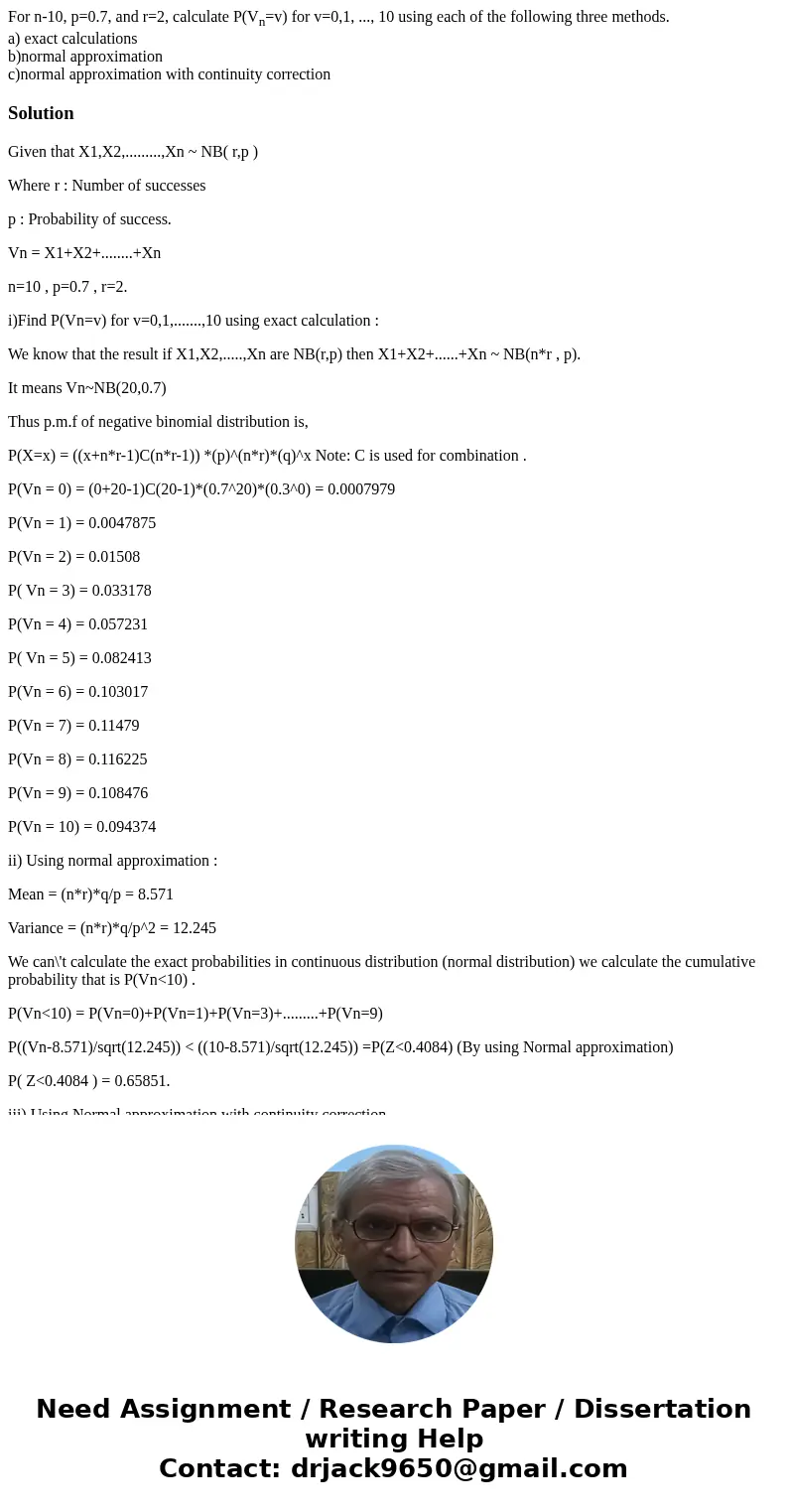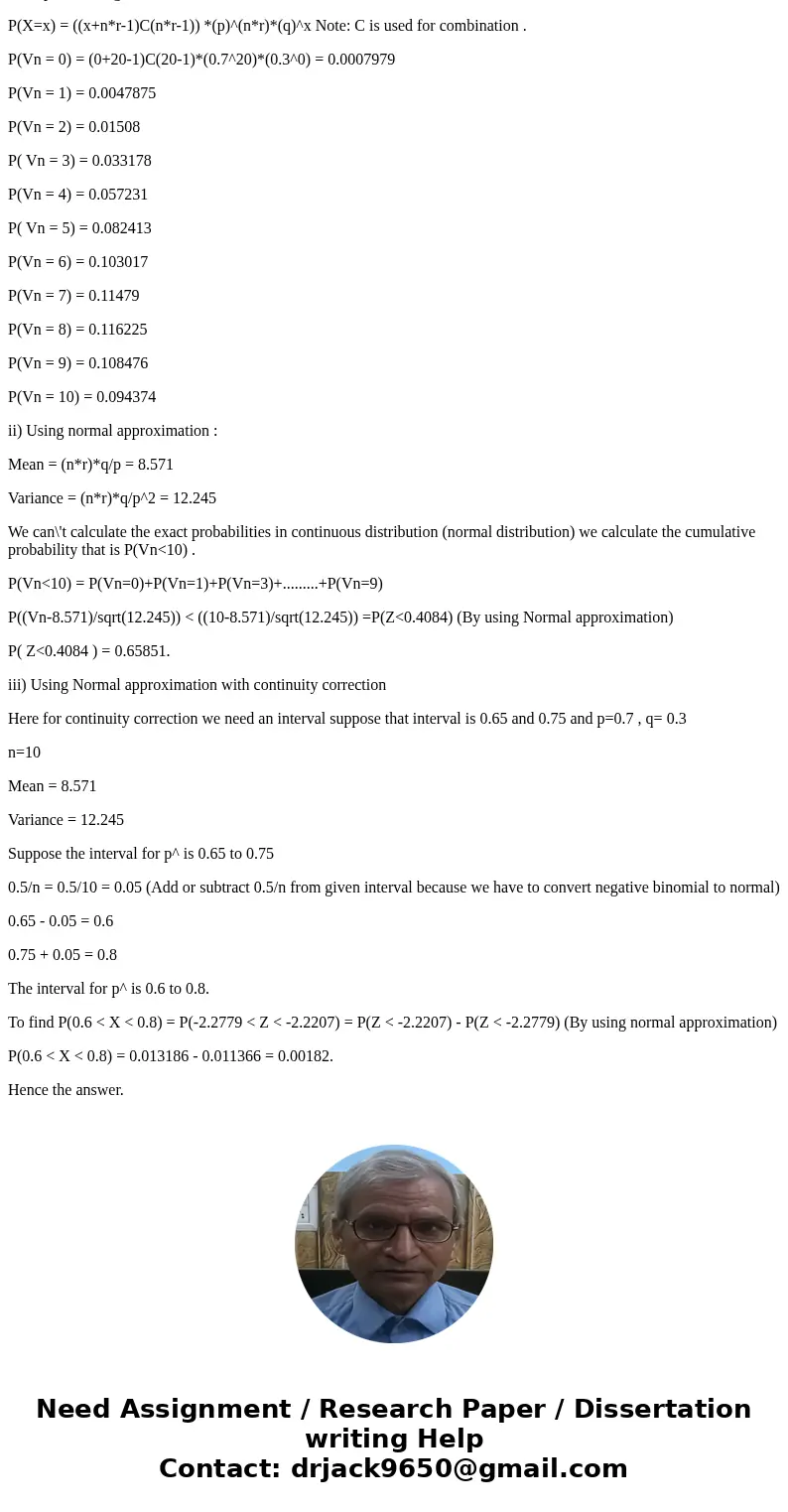For n10 p07 and r2 calculate PVnv for v01 10 using each of
For n-10, p=0.7, and r=2, calculate P(Vn=v) for v=0,1, ..., 10 using each of the following three methods.
a) exact calculations
b)normal approximation
c)normal approximation with continuity correction
Solution
Given that X1,X2,.........,Xn ~ NB( r,p )
Where r : Number of successes
p : Probability of success.
Vn = X1+X2+........+Xn
n=10 , p=0.7 , r=2.
i)Find P(Vn=v) for v=0,1,.......,10 using exact calculation :
We know that the result if X1,X2,.....,Xn are NB(r,p) then X1+X2+......+Xn ~ NB(n*r , p).
It means Vn~NB(20,0.7)
Thus p.m.f of negative binomial distribution is,
P(X=x) = ((x+n*r-1)C(n*r-1)) *(p)^(n*r)*(q)^x Note: C is used for combination .
P(Vn = 0) = (0+20-1)C(20-1)*(0.7^20)*(0.3^0) = 0.0007979
P(Vn = 1) = 0.0047875
P(Vn = 2) = 0.01508
P( Vn = 3) = 0.033178
P(Vn = 4) = 0.057231
P( Vn = 5) = 0.082413
P(Vn = 6) = 0.103017
P(Vn = 7) = 0.11479
P(Vn = 8) = 0.116225
P(Vn = 9) = 0.108476
P(Vn = 10) = 0.094374
ii) Using normal approximation :
Mean = (n*r)*q/p = 8.571
Variance = (n*r)*q/p^2 = 12.245
We can\'t calculate the exact probabilities in continuous distribution (normal distribution) we calculate the cumulative probability that is P(Vn<10) .
P(Vn<10) = P(Vn=0)+P(Vn=1)+P(Vn=3)+.........+P(Vn=9)
P((Vn-8.571)/sqrt(12.245)) < ((10-8.571)/sqrt(12.245)) =P(Z<0.4084) (By using Normal approximation)
P( Z<0.4084 ) = 0.65851.
iii) Using Normal approximation with continuity correction
Here for continuity correction we need an interval suppose that interval is 0.65 and 0.75 and p=0.7 , q= 0.3
n=10
Mean = 8.571
Variance = 12.245
Suppose the interval for p^ is 0.65 to 0.75
0.5/n = 0.5/10 = 0.05 (Add or subtract 0.5/n from given interval because we have to convert negative binomial to normal)
0.65 - 0.05 = 0.6
0.75 + 0.05 = 0.8
The interval for p^ is 0.6 to 0.8.
To find P(0.6 < X < 0.8) = P(-2.2779 < Z < -2.2207) = P(Z < -2.2207) - P(Z < -2.2779) (By using normal approximation)
P(0.6 < X < 0.8) = 0.013186 - 0.011366 = 0.00182.
Hence the answer.


 Homework Sourse
Homework Sourse